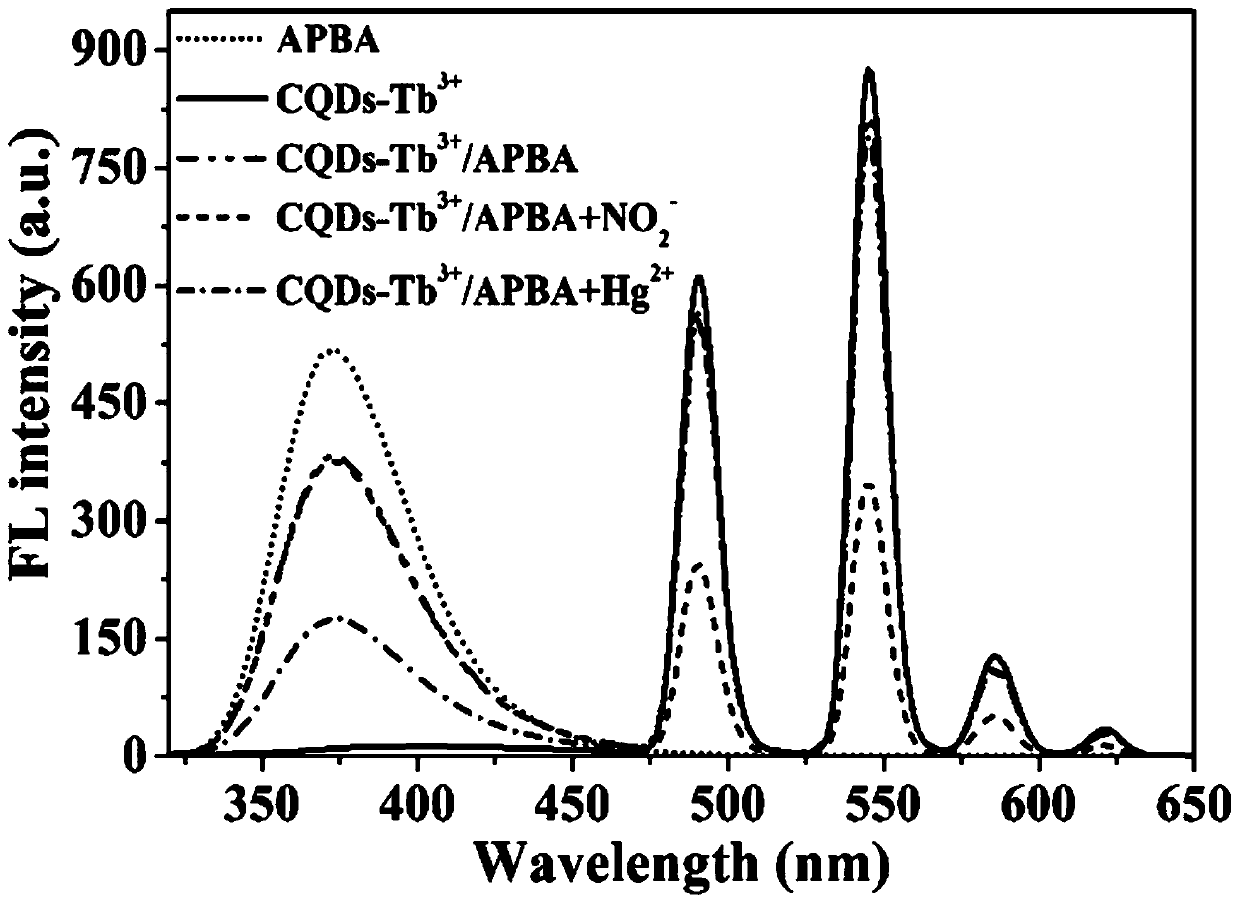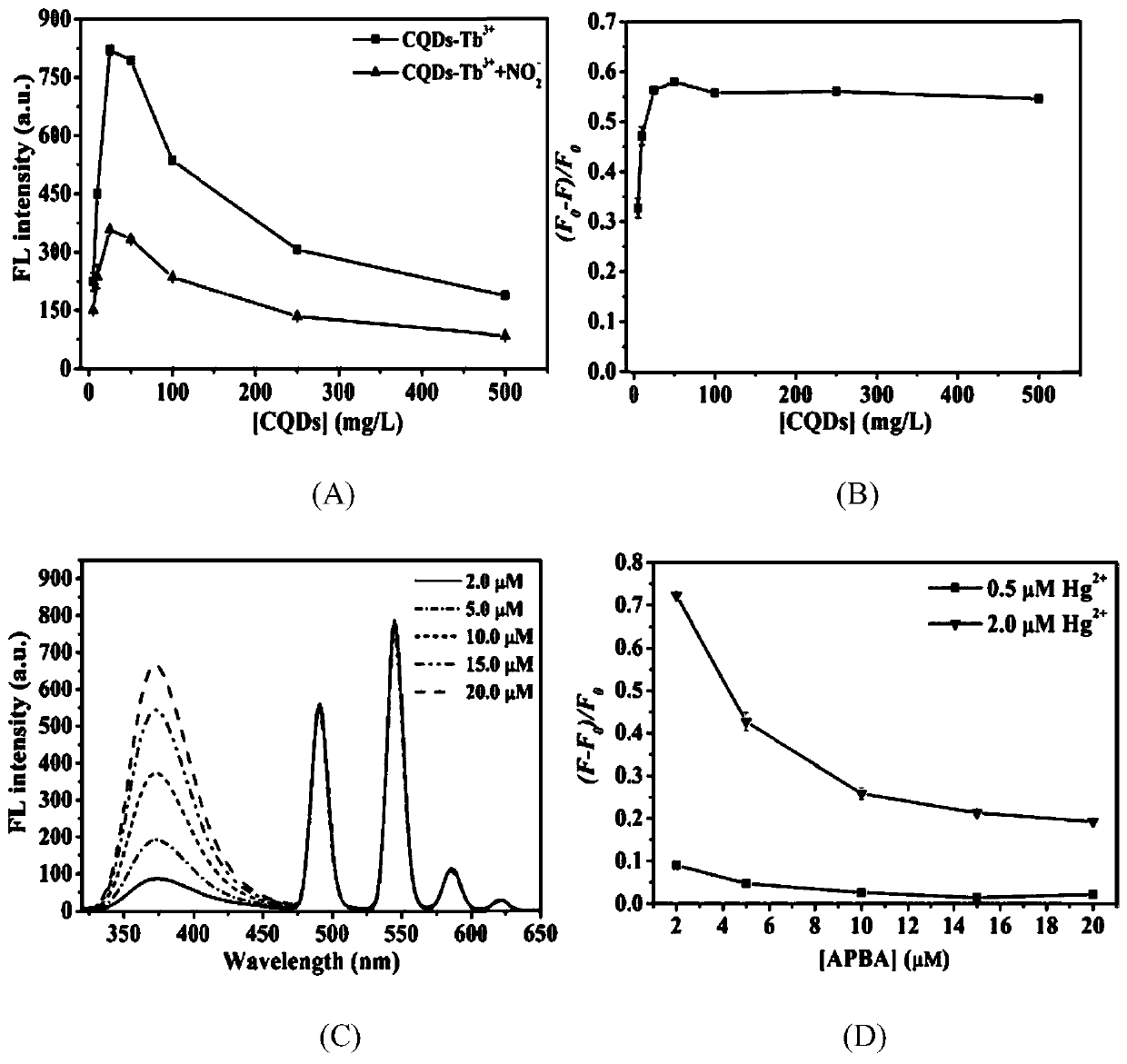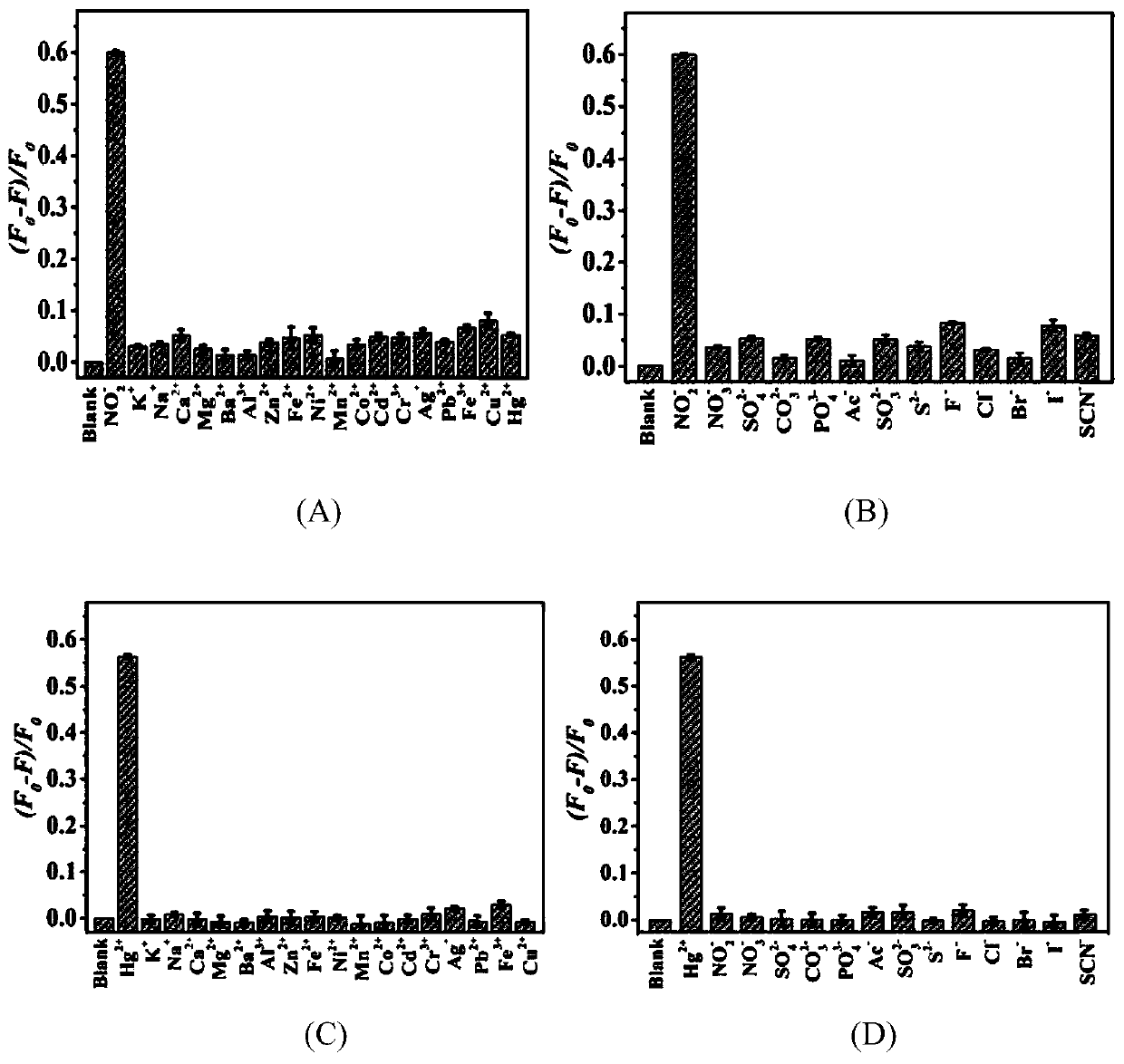Dual-emission fluorescent probe for simultaneously detecting nitrite ions and Hg<2+> and method thereof
A technology of nitrite ion and double-emission fluorescence, which is applied in the direction of fluorescence/phosphorescence, preparation of test samples, measurement devices, etc., can solve the problem of insufficient sensitivity and achieve good consistency and selectivity
- Summary
- Abstract
- Description
- Claims
- Application Information
AI Technical Summary
Problems solved by technology
Method used
Image
Examples
Embodiment 1
[0023] In this example, a dual-emission fluorescent probe based on carbon quantum dots is designed. The carbon quantum dots in the dual-emission fluorescent probe are mixed aqueous solutions of nicotinic acid and barbituric acid, which are placed in a high-pressure reactor and passed through It is prepared by hydrothermal reaction, and its specific synthesis method is as follows:
[0024] Weigh niacin (3.0mmol, 369.11mg) and barbituric acid (3.0mmol, 384.27mg) into a 50mL beaker, add 20mL deionized water, ultrasonically disperse for 15min, transfer the mixture to 100mL polytetrafluoroethylene In a lined autoclave, the reaction was carried out at 180 °C for 8 hours, and then allowed to cool naturally to room temperature. The reaction product was centrifuged at 10000rpm for 15min, the supernatant was taken, and further purified with a dialysis bag (1000Da) to obtain a light yellow quantum dot solution, which could be freeze-dried to obtain a carbon quantum dot solid powder produ...
Embodiment 2
[0028] In this example, based on the carbon quantum dots CQDs prepared in Example 1, a dual-emission fluorescent probe was constructed to detect NO 2 - and Hg 2 + Perform simultaneous detection:
[0029] A certain amount of glycine buffer solution (pH=7.5), CQDs solution, Tb(NO 3 ) 3 solution, APBA solution constitute CQDs-Tb 3+ / APBA dual emission fluorescent probe buffer solution system, and then add a certain concentration of NaNO to the buffer solution system 2 (5.0~5000.0nM) or Hg(NO 3 ) 2 (0.1 ~ 10.0μM) or a certain volume of pretreated water sample as the sample to be tested, and finally dilute to 10.0mL with ultrapure water. In the mixed solution after constant volume, the concentration of glycine is 20mM, the concentration of CQDs solution is 25~100mg / L, Tb(NO 3 ) 3 The concentration of the solution is 20.0 μM, the concentration of the APBA solution is 8-20 μM, shake well and stand at room temperature for 5 minutes. With 260-280nm as the excitation waveleng...
Embodiment 3
[0051] Based on the above-mentioned embodiments, this embodiment designs a method for simultaneously detecting nitrite ions and Hg using a dual-emission fluorescent probe. 2+ method, the method is:
[0052] 1) carbon quantum dots CQDs, Tb(NO) prepared in Example 1 3 ) 3 . APBA was added to the glycine buffer solution with pH = 7.5, and then the sample to be tested was quantitatively added to the buffer solution system, and finally the volume was adjusted to 10.0 mL with ultrapure water. At the same time, set up a set of buffer solution system without adding the sample to be tested, and also set the volume to 10.0mL as a blank sample. In the mixed solution after constant volume, the glycine concentration is 20mM, the CQDs solution concentration is 50mg / L, Tb(NO 3 ) 3 The concentration of the solution is 20.0 μM, the concentration of the APBA solution is 10 μM, shake well and stand at room temperature for 5 minutes.
[0053] 2) Taking 270nm as the excitation wavelength, sca...
PUM
 Login to View More
Login to View More Abstract
Description
Claims
Application Information
 Login to View More
Login to View More - R&D
- Intellectual Property
- Life Sciences
- Materials
- Tech Scout
- Unparalleled Data Quality
- Higher Quality Content
- 60% Fewer Hallucinations
Browse by: Latest US Patents, China's latest patents, Technical Efficacy Thesaurus, Application Domain, Technology Topic, Popular Technical Reports.
© 2025 PatSnap. All rights reserved.Legal|Privacy policy|Modern Slavery Act Transparency Statement|Sitemap|About US| Contact US: help@patsnap.com



